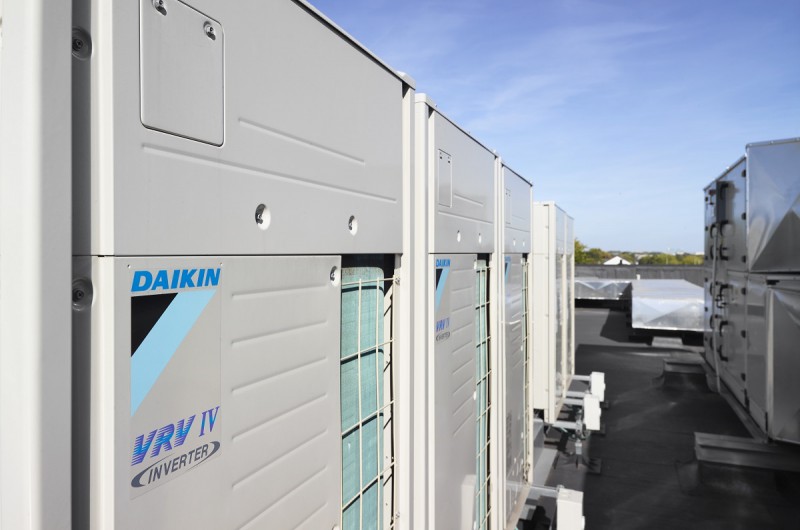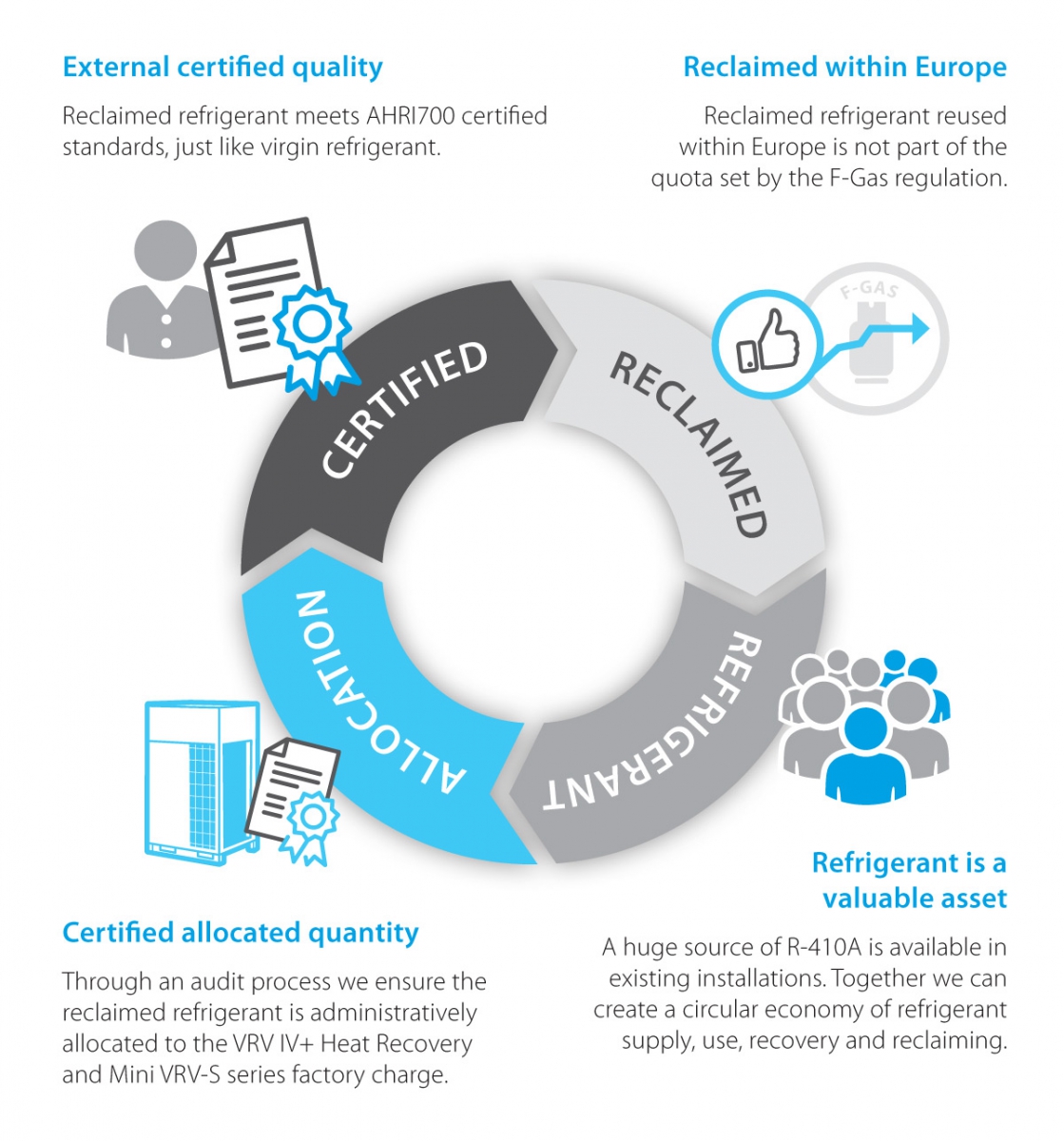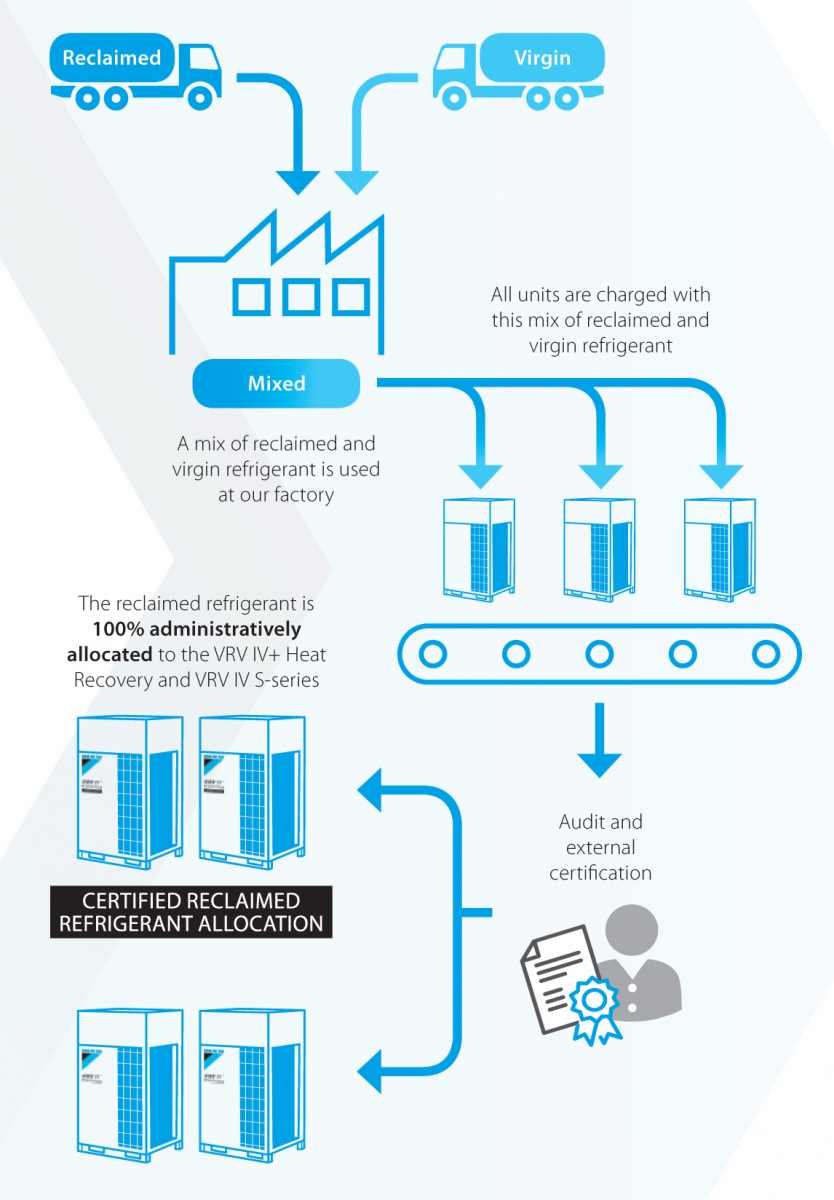



Daikin has announced that the newly launched VRV IV+ system will, from 2019, have certified reclaimed refrigerant allocated to them during production, meaning these units have zero impact on F-Gas quotas. The quantity of reclaimed refrigerant allocated to these units avoids more than 300,000 tons of CO2eq from being generated in the production of virgin refrigerant.
You can see how this works here.
What does Certified Reclaimed Refrigerant Allocation mean?

When you see a Daikin product described as having a “Certified Reclaimed Refrigerant Allocation” this means both the quantity and quality of the reclaimed refrigerant is confirmed by independent auditors as being of:
- Certified quantity: the reclaimed refrigerant allocated administratively to the unit is equivalent to 100% of its factory charge, so the unit has zero F-Gas quota impact
- Certified quality: the reclaimed refrigerant has been reclaimed to AHRI700 certified standards to be of the same quality as virgin R410A.
Reclaim with Confidence
Daikin has also launched its brand new ‘Reclaim with Confidence’ service, which is available to Daikin D1 Business Partners and D1+ Premium Partners, via A-Gas.

Take a look at how it works here.
What does it involve?
There is often confusion about the difference between recovery, recycling and reclaiming refrigerant. So here’s a quick guide:
Recovery is when you remove the refrigerant from a system to a yellow-top cylinder. A hazardous waste consignment note must be completed and it can then be returned to the supplier for reprocessing.
Recycling is when you remove a refrigerant from a system into a receiver cylinder, so it may be used again on the same site. It cannot be transferred to another site, or stored for longer than 12 months. And remember: best practise is that recycled refrigerant shouldn’t be used when a compressor has failed or is being changed.
Recovery and receiver cylinders should also be kept separate and clearly identified to avoid contamination and reduce separation costs at the processor.
Reclaiming refrigerant is a much more extensive process of cleaning and reprocessing recovered refrigerant to AHRI700 standard:
First the recovered gas is tested in a laboratory, then distilled to boil off the F-gases. Then, any sludge, particulates, moisture, acid or oil are safely disposed of. Next any non-condensable gases such as Nitrogen and air are removed. The gas is then dried and analysed to check its purity levels. If other refrigerants are mixed in, these are separated in a distillation column into individual pure components for re-use or disposal.
Many people assume all recovered refrigerant is incinerated, but that’s not the case. If it is separated and recovered according to best practice, as above, in dedicated reclamation facilities, it can be separated and reclaimed to AHRI700 standard – the same level of purity as new refrigerant. That’s important, because refrigerant recovered from a site can only be resold, passed on or exchanged if it meets the AHRI700 standard. This standard specifies purity requirements for fluorocarbon, hydrocarbon, and carbon dioxide based refrigerants – whatever source they come from.
Using AHRI700 standard refrigerant is vital for the performance, efficiency and long life of a system and to ensure the warranty remains valid.
If you have any questions at all on these services, please don't hesitate to contact us on 01462 435686.
Sign up for our regular monthly email and be among the first to know about: